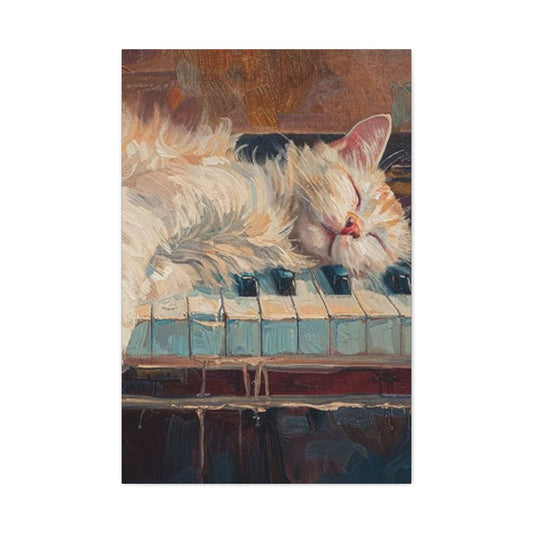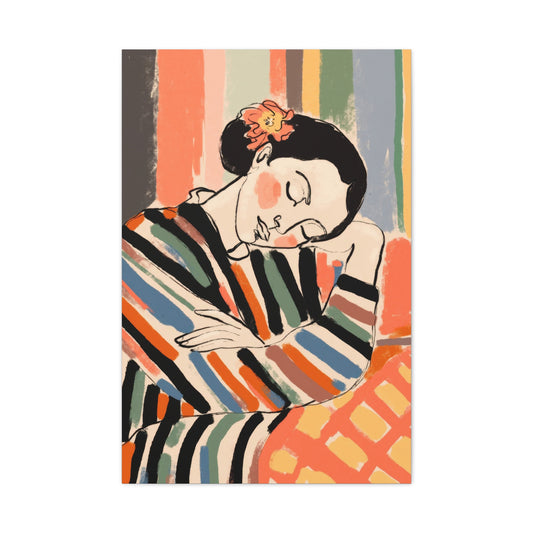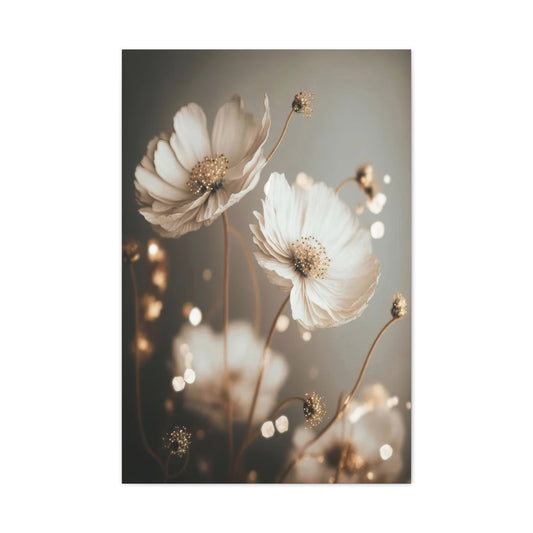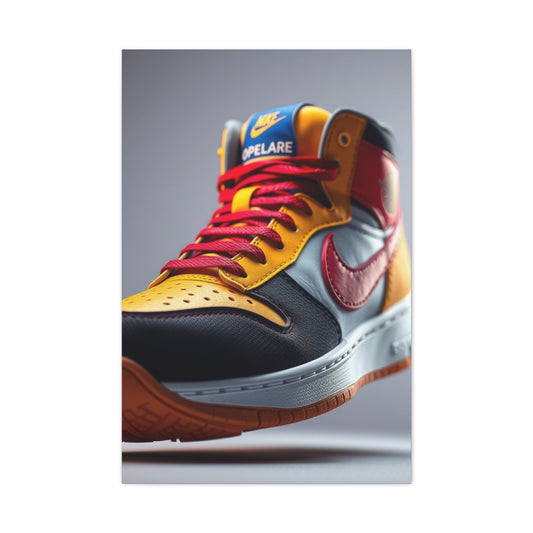The Art of Oil-Based Printmaking: Unlocking New Creative Potential
Printmaking is an age-old art form, rich in techniques and full of opportunities for artistic expression. From the fine lines of etching to the bold, textured impressions found in relief printing, each method offers distinct ways to convey emotion and meaning. One of the most dynamic approaches in printmaking is the combination of oil paints with various printing methods, which has been explored by artists for centuries. Schmincke's Print Medium for Relief and Intaglio offers a modern solution, transforming regular oil paints into highly effective printing ink. This versatile medium can breathe new life into the ancient practice of oil-based printmaking, whether you're working with intricate etchings or bold woodcuts.
Understanding how to effectively use this medium opens up a world of creative possibilities. The process of oil-based printmaking, which involves the careful preparation of plates, the transformation of oil paints into print inks, and the selection of appropriate paper, can significantly enhance both the technical and aesthetic aspects of your work. By embracing the benefits of Schmincke’s Print Medium, you’ll gain access to an expansive palette of techniques and materials that allow for a more nuanced and dynamic printmaking experience. Whether you’re an experienced printmaker or a newcomer to the craft, learning how to harness the potential of oil-based printing inks will allow you to explore your artistic vision in fresh, exciting ways.
Crafting the Perfect Print Plate for Detail and Texture
The first and arguably most crucial step in oil-based printmaking is the creation of a print plate. In both intaglio and relief printmaking, the plate serves as the foundation upon which the entire print is built. In intaglio printmaking, the plate is typically made from copper or another type of metal, although plastic can also be used for certain techniques. The plate is the canvas on which you will etch, engrave, or create other marks that will hold the ink. These incised lines will be what gives your print its delicate detail and fine textures. Whether you're working with a metal plate or a plastic alternative, the preparation of this surface is paramount to ensuring the quality of your print.
In relief printmaking, the process is slightly different. Instead of etching or incising lines into the plate, relief printing focuses on creating raised areas that will carry the ink. The raised sections are inked, and the non-raised areas remain ink-free, resulting in bold and graphic prints with distinct textures. The careful planning of the plate’s design is essential to achieving the desired aesthetic. The deeper the incised lines or the more pronounced the raised surfaces, the more dramatic the ink transfer will be.
Understanding the role of your plate in the printmaking process is key to mastering both intaglio and relief techniques. In intaglio, the ink sits within the grooves of the plate, while in relief printing, the ink rests on the raised areas. The way the ink interacts with these surfaces will affect the outcome of your print, making it important to think carefully about both your design and your plate's preparation. Once the plate is complete, it's time to move on to the next step: transforming your oil paints into the perfect printing ink.
Transforming Oil Paints into High-Quality Print Ink with Schmincke Print Medium
Now that you’ve created your plate, it’s time to prepare the ink. One of the unique advantages of working with oil-based printmaking inks is their rich consistency and depth of color. Schmincke’s Print Medium for Relief and Intaglio is specifically formulated to help you transform standard oil paints into printmaking ink, creating a smooth, even distribution of color on your plate. This medium is ideal for both relief and intaglio techniques, ensuring that the oil paints flow smoothly and adhere well to the plate's surface. The ink’s texture and viscosity allow it to work seamlessly with different types of plates, whether you're working with delicate etchings or bold, textured woodcuts.
What makes Schmincke's Print Medium stand out is its ability to help you create vibrant prints with stunning luminosity. Mussini Oil paints, known for their superior pigmentation, work beautifully with this medium, offering a greater range of expression. The result is an ink that can be applied evenly to the plate while still allowing for subtle gradients and intricate details. Whether you're seeking deep, rich tones or softer, more transparent layers, this combination of high-quality paint and specialized medium gives you the flexibility to manipulate your work to suit your artistic vision.
The use of oil-based printing ink also adds a level of richness to the final print that is difficult to achieve with other materials. Oil paint has a natural depth and gloss that can bring a sense of luminosity to the printed image, giving it a sophisticated and timeless quality. This makes oil-based printmaking ideal for artists looking to create prints that stand out for their texture, color, and visual impact.
Choosing the Right Paper and Preparing for the Printing Process
Once you’ve mixed your oil paints with the Schmincke Print Medium, the next essential component of printmaking is selecting the right paper. The choice of paper plays a significant role in the success of your print, particularly in intaglio techniques. Since intaglio printing relies on pressure to transfer ink from the plate to the paper, the paper must be thick and durable enough to handle the intense pressure exerted by the press. Papers like Hahnemuhle Etching Paper are ideal for this process because they are designed to withstand heavy pressure and still retain their integrity. These papers can absorb the ink efficiently, producing prints that capture the intricate details of the plate while maintaining their crispness and texture.
When preparing the paper, one of the most important steps is moistening it. This process helps the paper absorb the ink more effectively and ensures that it doesn’t tear or become damaged during the printing process. You can moisten the paper by lightly spraying it with water using a spray bottle. The water helps to soften the fibers, allowing the paper to take on the ink more easily and preventing it from becoming too brittle under the pressure of the press. This simple but important step ensures that your prints will have the right texture and detail.
With the plate, ink, paper, and press all ready to go, you can now focus on the most exciting part of the process: printing. The printing press plays a pivotal role in the printmaking process by distributing even pressure across the surface of the plate, transferring the ink from the plate to the paper. To achieve the best possible results, it’s essential to adjust the press for the specific plate and paper you’re working with. The right amount of pressure is critical to ensuring a clean, precise print without distorting the design.
Perfecting the Printing Process for Rich, Detailed Impressions
When printing, the ink is rolled onto the plate using a glass plate and an ink roller. The roller ensures an even and smooth distribution of the ink across the plate, filling both the incised lines and the raised areas of the relief plate. The key to successful oil-based printmaking is in the application of ink. It should be applied in thin layers, gradually building up to the desired coverage. Too much ink can result in a muddy print, while too little may result in faint or incomplete impressions.
As you carefully roll the ink onto the plate, take care to avoid overloading the surface with excess pigment. The ink should be spread evenly across the plate, ensuring it fills the etched or raised areas without smudging or blotting. Once the ink is applied, it’s time to transfer it onto the prepared paper using the press. The right amount of pressure will result in a beautiful, clean print that captures all the details you’ve worked hard to create.
The Timeless Beauty of Oil-Based Printmaking
The combination of Schmincke Print Medium with oil paints creates a powerful tool for artists looking to explore the world of oil-based printmaking. By mastering the plate-making process, selecting the appropriate materials, and utilizing the right tools, you can create prints that are not only visually stunning but also rich in texture and depth. Oil-based printmaking allows you to express your artistic vision with a level of flexibility and precision that is hard to achieve with other media. The ability to manipulate ink and press settings, along with the superior quality of the Schmincke Print Medium, allows you to produce detailed, vivid prints that are a true reflection of your unique creative voice.
Incorporating oil-based printmaking into your artistic repertoire opens up a new world of possibilities, where tradition and innovation come together in a harmonious blend. As you continue to experiment and refine your techniques, you will unlock even more creative potential, producing prints that stand the test of time both in their technical complexity and artistic brilliance. Whether you’re creating intricate, delicate etchings or bold, striking woodcuts, Schmincke Print Medium gives you the tools to bring your vision to life, with all the beauty and richness that oil-based printmaking can offer.
Mastering Plate Preparation and Inking Techniques in Oil-Based Printmaking
In oil-based printmaking, the preparation of your plate and the method used to ink it are crucial to achieving high-quality prints. The precision in these steps directly influences the crispness of your lines, the vibrancy of your colors, and the textural richness of your final artwork. Whether you’re working with intaglio techniques such as etching, engraving, or drypoint, or using relief methods like linocuts, each stage of the process requires careful attention. This part of the printmaking journey sets the foundation for the ultimate success of your work. The way you prepare and ink your plate will determine the clarity of your image and how well it translates onto the paper, making these steps essential in printmaking.
Plate Preparation for Etching, Engraving, and Drypoint Techniques
The initial stage in creating your oil-based print is to prepare your plate. Whether you are using metal, plastic, or another material, the preparation process is central to the quality of your work. For intaglio techniques, this involves creating lines, grooves, or textures on the surface of your plate, which will hold the ink and define the image. Etching, engraving, and drypoint are three popular methods for this phase, and each one offers a distinct way to work with the plate’s surface, influencing the type of marks and textures that will appear in the final print.
Etching is one of the most widely used techniques in intaglio printmaking. In this process, you first coat your metal plate with an acid-resistant ground, which is typically a type of wax or varnish. Once the ground is applied, you can then create your design by scratching through the coating with a needle or sharp tool, exposing the metal beneath. The plate is then immersed in an acid bath, which “bites” into the exposed metal, etching the lines or textures you’ve created. The depth of the grooves can vary depending on the duration of the acid bath, allowing you to control the intensity of the lines in your design. The acid’s action allows for precise, intricate details, making etching ideal for fine line work.
In contrast, engraving involves directly carving into the metal or plate with specialized tools. This technique allows for clean, sharp lines, often with more definition than etching. Engraving requires a steady hand and fine control to achieve smooth, accurate cuts that will hold the ink effectively. The result is usually a print with clear, strong lines, perfect for works that demand high precision.
Drypoint, while similar to engraving, is a more immediate and spontaneous technique. Rather than using acid or specialized tools, drypoint involves using a sharp needle or stylus to scratch into the surface of the plate. This method does not require any chemical process and is ideal for those seeking a more tactile and expressive line quality. Drypoint tends to yield marks with a more varied texture, offering greater depth and subtlety compared to the clean lines of engraving.
Once the plate is properly prepared, it is essential to clean it thoroughly. Any leftover oils, dust, or debris can affect the quality of the print, causing imperfections in the final image. Clean your plate carefully, ensuring no residue remains, as even the slightest bit of contamination can interfere with the inking process.
Mixing and Applying Ink for Perfect Results
After the plate has been prepared and cleaned, the next step is mixing and applying the ink. The choice of ink and the way it is applied can significantly impact the final print. For oil-based printmaking, using high-quality ink and an appropriate medium is crucial to achieving the right consistency and flow. Schmincke Print Medium for Relief and Intaglio is a popular choice, as it helps to thin oil paints to the ideal viscosity for printmaking. By adding this medium to your oil paints, you create a printmaking ink that is not too thick, ensuring that it can easily fill the grooves and raised areas of your plate without clumping or creating uneven marks.
When mixing your ink, start with a small amount of the oil paint and medium, gradually adjusting the proportions to achieve the desired consistency. A well-mixed ink should be smooth, with a texture that allows it to flow easily into all the details of the plate. If the ink is too thick, it will not fill the grooves properly, resulting in incomplete or uneven impressions. If it’s too thin, the ink may run, creating a smudged or blurry image.
Once you have mixed your ink to the right consistency, it’s time to apply it to the plate. To do this, place a small amount of ink on a glass plate and use an ink roller to spread it evenly. The ink should be rolled out in a thin, consistent layer, ensuring it covers the entire surface of the plate, including all of the etched, engraved, or drypointed areas. Be careful not to overload the plate with ink, as excess ink can obscure details or lead to a muddy print. The goal is to ensure that the ink fills the grooves or raised areas while leaving the non-etched areas clean.
The application of ink is an essential step in creating a successful print, and the texture of the ink will greatly affect the outcome. A smooth, even layer of ink is key to ensuring that the print is sharp and detailed. Practice rolling out the ink, adjusting the amount used and the pressure applied as necessary to get the right results. This step is all about control and finesse, so take your time to master it.
Transferring Your Inked Plate to Paper
Once the plate has been inked, the next stage is transferring the image to paper. The choice of paper plays a vital role in how well the ink is absorbed and how the final print will look. Some papers are better suited for intaglio prints, as they can handle the pressure of the printing press while holding fine details. Hahnemuhle Etching Paper is one such option, designed specifically for this purpose. This type of paper has a textured surface that enhances the impression of the ink, allowing for rich detail and sharp lines to come through.
Before placing the paper onto the plate, it should be moistened. This allows the fibers to expand, ensuring that the ink adheres well to the paper. Depending on the type of printmaking technique you are using, the paper may need to be soaked for a few minutes or just lightly dampened with a sponge. The moisture helps to prevent the paper from tearing under pressure and improves the transfer of ink, making it essential for achieving fine details in your print.
Carefully align the paper with the inked plate, making sure it is positioned properly before running it through the press. The printing press applies even, consistent pressure to transfer the ink from the plate to the paper. The amount of pressure used will depend on several factors, including the type of plate, the thickness of the paper, and the texture of the ink. In some cases, you may need to adjust the settings on the press to get the best result. A press that exerts too much pressure may distort the image, while too little pressure may not transfer enough ink, leading to a faint or incomplete print.
The process of transferring the inked plate to paper is where all your preparation and inking work come together. It’s the moment when your design is revealed, and the final print takes shape. As you become more experienced with the press, you will learn how to fine-tune the pressure, speed, and alignment to get the perfect impression every time.
Mastering the Pressing Process in Oil-Based Printmaking
The pressing process in oil-based printmaking marks the crucial stage where the vision of your plate design is finally transferred onto paper. This step is key to achieving the perfect balance between detail, texture, and vibrancy in your prints. It is at this point that the quality of your preparationwhether in terms of the plate, ink, or toolstruly comes to life. To get the best possible result, the settings and operation of the press are of paramount importance. Proper alignment between the plate, paper, and ink ensures a clean and sharp transfer, and this is where an understanding of pressure control becomes critical.
In oil-based printmaking, the printing press is your most valuable tool. It's not just about loading your plate and feeding it through the press. You need to carefully monitor the pressure applied during the transfer. Excessive pressure can lead to over-saturation of the ink, resulting in blurred details or smudges. On the other hand, insufficient pressure can leave parts of the plate under-inked or not transfer the image properly. Striking the right pressure balance ensures the best result, making the inking crisp, detailed, and even.
One crucial factor to consider when setting up the press is the thickness of the paper. Thicker paper requires more pressure to ensure that the ink is fully transferred, while thinner paper might need less pressure to avoid warping or damaging the delicate fibers. The amount of ink used also plays a role in determining how much pressure is needed. If the ink is applied too thickly, it can lead to a heavy imprint, while too little ink will result in faint, uneven transfers. Practicing with different paper types and ink thicknesses will help you find the perfect pressure for each combination, leading to consistently stunning results.
Drying Techniques for Oil-Based Prints: Patience and Precision
Once your print has been successfully pressed, the next critical stage is drying. Unlike water-based inks, oil-based prints require significantly longer drying times due to the inherent properties of oil paint. Understanding the best drying techniques is essential for ensuring that your prints retain their integrity and quality. The drying process not only preserves the vibrancy of the ink but also prevents smudging, cracking, or distorting the texture of the print.
For oil-based prints, the key is patience. Allowing your prints ample time to dry is crucial, and rushing this process could damage the finished work. Ideally, prints should be dried in a cool, dry space, away from direct sunlight or any extreme environmental conditions that could affect the integrity of the ink or paper. Drying oil-based prints can take a considerable amount of timeoften days or even weeks, depending on the thickness of the ink layers and environmental factors.
While it may be tempting to speed up the drying process with external heat sources, such as placing prints near a radiator or heating plate, it is important to exercise caution. Excessive heat can cause the ink to dry unevenly or too quickly, which might compromise the texture and overall quality of the print. Similarly, the heat could cause the paper to warp or curl, ruining the aesthetic of the print. Instead, allow your prints to dry flat in an area with good air circulation. This will enable the prints to cure evenly, ensuring that the vibrant details are preserved and the paper remains smooth.
During the drying process, avoid stacking your prints on top of each other, as this could lead to smudging, unwanted transfers, or even the prints sticking together. If you must place them on top of one another for space reasons, make sure there’s a protective layer, such as tissue paper, between the prints to avoid any damage. Drying oil-based prints requires patience, but with careful attention, the rewards will be well worth the wait.
Handling and Storing Finished Prints for Longevity
Once your oil-based prints are fully dry, it’s time to handle them with the utmost care to ensure their preservation. Proper storage and framing are key to maintaining the quality of your prints over time. Because oil-based prints are more vulnerable to environmental factors such as humidity, light, and temperature, handling and storage methods should prioritize protection from these elements.
One of the best ways to store finished prints is by using flat, acid-free portfolios or archival-quality folders. These materials are designed to protect your prints from exposure to damaging acids, which could cause the paper to degrade or discolor over time. Storing your prints in a cool, dry place will further extend their life by minimizing the risk of moisture damage, warping, or fading due to fluctuations in temperature or humidity. In addition to providing a safe storage environment, handling your prints with clean, dry hands will prevent oils, dirt, or fingerprints from contaminating the surface of the print.
When it comes to framing, it's important to use acid-free materials such as mat boards and mounting materials. These will protect the print from the harmful effects of acids and ensure the preservation of the vibrant colors and details you worked hard to create. If you choose to frame your print, ensure it is displayed in a location that is protected from direct sunlight, as exposure to UV rays can cause the ink to fade over time.
While storing prints flat is often the best option, if you need to store them rolled, make sure to use a protective, acid-free tube that allows for minimal pressure on the print. Rolling should only be done with prints that are fully dried and cured, as rolling wet prints can lead to severe smudging and irreversible damage to the texture of the ink. Even when rolled, the prints should be unrolled and flattened at the earliest opportunity to avoid any permanent creasing or deformation.
Caring for Your Printing Press: Essential Cleaning Techniques
In the world of oil-based printmaking, the printing press is the heart of your artistic process. It is where your design transforms into a tangible work of art, and as such, it requires careful attention to ensure its longevity and smooth performance. Cleaning your press regularly is key to maintaining its functionality and ensuring that each print is produced with precision and consistency.
After each print session, take the time to wipe down the press, removing any residual ink that may have splattered or seeped into the machine. Using a soft cloth or sponge, gently clean all surfaces, focusing particularly on areas where ink may have accumulated. It's essential to choose the right cleaning agent for this process. Avoid harsh solvents that could degrade the materials or cause wear and tear over time. Instead, opt for mild, solvent-free cleaners that can break down the ink without harming the press. This is crucial for keeping the press in good condition for future projects.
The rollers are a crucial component of the press, and keeping them in optimal condition will ensure even pressure distribution during printing. Ink buildup on rollers can create uneven prints and cause the press to malfunction, so it’s important to regularly clean the rollers after each use. Remove excess ink with a clean rag and then clean the rollers with a mild solvent or oil specifically designed for printing equipment. This not only helps in maintaining even pressure but also ensures the longevity of the rollers and prevents ink from becoming too sticky or dried out. Lubricating the moving parts of the press after cleaning helps reduce friction, further enhancing the press's performance and extending its life.
In addition to cleaning, performing routine checks on your press’s moving parts is essential. Over time, dust and debris can accumulate in areas like gears or rollers. A periodic inspection to clear these areas will prevent unwanted build-up and help the press run smoothly. Oiling the necessary parts ensures that the press operates with minimal resistance, making each printing session a smooth and effortless process. Proper maintenance of your press allows you to work more efficiently and get the most out of your investment.
Preserving the Integrity of Your Printmaking Plates
Whether you're using copper, zinc, or plastic plates, the condition of your plates directly influences the quality of your prints. These plates are the medium where your artistic vision takes form, so ensuring their care is fundamental to achieving long-lasting, consistent results. Regular maintenance after each print session helps prevent issues such as corrosion, oxidation, and ink build-up, all of which can negatively affect the printing process.
After finishing a print run, it's essential to clean the plate thoroughly. This includes removing any ink or solvent residue that may have dried on the surface. For metal plates, a quick rinse can often do the trick, but if ink remains stubbornly stuck, use a mild solvent or specialized plate cleaner. In the case of copper plates, be aware that oxidation may occur over time, leading to tarnishing that can affect the surface's ability to produce clean, sharp prints. To combat this, after cleaning, consider applying a thin layer of protective varnish or wax. This simple step forms a protective barrier, preventing oxidation and maintaining the plate’s smooth finish for future printmaking.
For plates that require consistent use, such as copper or zinc, you may need to lightly sand or polish them periodically. This helps to maintain the smooth surface required for fine detail work and ensures that the plate remains receptive to new ink applications. Using a fine abrasive or polishing cloth can help remove any unwanted blemishes or rough patches. Always be gentle with the sanding or polishing process, as overdoing it can cause irreversible damage to the surface of the plate.
When storing your plates, always ensure that they are kept in a cool, dry place to avoid environmental damage. Humidity or extreme temperature fluctuations can cause plates to warp or degrade over time, so try to store them in a stable environment. If you're working with plates made of a softer metal like copper, it's especially important to protect them from scratches and dents, which can ruin the plate's ability to produce high-quality prints. By taking the time to clean and store your plates properly, you'll ensure their longevity and maintain their pristine condition for future projects.
Cleaning Ink Rollers and Printmaking Tools
After the press and plates, one of the most crucial components of your printmaking toolkit is the ink rollers and other tools used for ink application. These items can accumulate ink quickly, which, if left unaddressed, can lead to clogging, uneven ink distribution, and ultimately, compromised prints. Therefore, it’s essential to clean them thoroughly after each use to prevent these issues from arising.
The first step in cleaning your ink rollers is to wipe away the excess ink with a clean rag or paper towel. This step is important because it removes the bulk of the ink and makes it easier to get rid of any remaining residue. Once you’ve wiped the roller, it’s time to apply a solvent-resistant cleaner to ensure that all traces of ink are removed. Be sure to pay attention to the edges and handles of the roller, as ink tends to accumulate in the small crevices and corners. A dedicated roller cleaner or a solvent designed specifically for cleaning printing tools will ensure a thorough clean without damaging the material.
For other ink-related tools, such as spatulas, palette knives, or brushes, you should begin by wiping away excess ink. These tools often come into contact with large amounts of ink during the printmaking process, so it's vital to prevent the ink from drying and hardening on the surfaces. After wiping off the bulk of the ink, wash the tools with warm, soapy water. This simple step will keep the tools clean and ready for your next printing session. The key here is to clean your tools right after use, as letting ink sit for too long can make cleaning much more difficult and may cause damage to the tools over time.
Beyond cleaning the tools themselves, it’s also important to maintain their overall condition. For example, be sure to check for any wear and tear on your rollers and replace them when necessary. Deteriorating rollers can affect ink distribution and pressure, leading to uneven prints. Regular maintenance of your tools ensures that you can create prints with consistent results.
Conclusion: The Importance of Proper Printmaking Equipment Care
Maintaining the quality of your printmaking tools and equipment is an investment in your craft. By dedicating time to cleaning and preserving your printing press, plates, rollers, and other tools, you ensure that your next project is just as successful as the last one. Well-maintained equipment not only extends the life of your tools but also helps you produce the best possible prints with each session.
By following the tips and practices outlined in this article, you will establish a solid routine for caring for your printmaking equipment. Your press will remain in top condition, your plates will continue to produce fine details, and your ink rollers and tools will always be ready for your next creative endeavor. Remember that proper maintenance is a long-term strategy that pays off by saving you time, effort, and money in the long run.
The care you give your equipment directly impacts the quality of the art you produce. By ensuring that your tools are clean and well-maintained, you not only extend their lifespan but also guarantee that each print will be of the highest possible quality. As you continue on your printmaking journey, these maintenance practices will become second nature, allowing you to focus more on your creative process and less on equipment concerns. Keep your tools in great shape, and your printmaking experience will continue to be both rewarding and fulfilling.
























